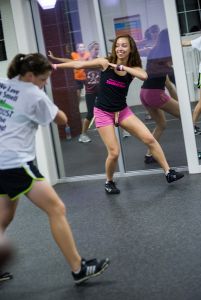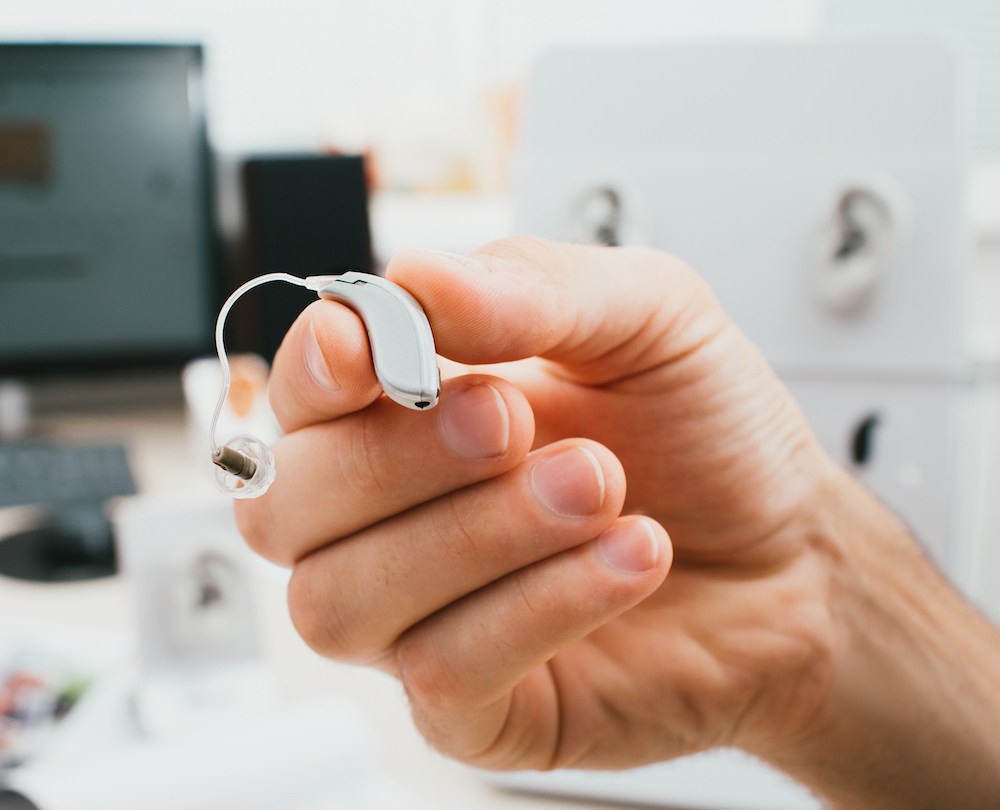How Wearable Tech is Merging with Hearing Aids
Decades of research have revealed a clear link between hearing loss and

By: admin | April 15, 2015
Are you committed to getting healthy this spring? Maybe two or three times a week, you enthusiastically attend Zumba and the resulting cardio workout makes you feel fantastic. But what if that class actually is detrimental to your hearing? In a ritual that plays out all over the country every day, millions of people don their workout gear and flock to their gym of choice for classes led by fitness instructors. With the rising popularity of fitness programs like Zumba, spinning, and BodyPump and Crossfit loud, pounding music goes hand in hand with the sweat and rising heart rates. But studies have shown that participants in these classes are at a serious risk of damaging their hearing and the instructors are at an even bigger risk.
With the music cranked up, typical decibel levels for fitness classes can reach unsafe levels quickly. Researchers from George Mason University in Virginia found that spinning classes, though increasingly popular, are among the worst offenders with noise levels blaring anywhere from 100 to 110 decibels. That is somewhere between the decibel level of a chain saw and a jet engine. And typical decibel levels in aerobics or Zumba are well over 90 decibels. Even Crossfit, which is gaining popularity across the country, is not without its problems. The banging of weights, dropping of heavy objects and flipping of tires creates sounds with intense shock waves similar to explosions. And none of it is healthy for your hearing. Though prolonged exposure to loud music is damaging to hearing, unfortunately most instructors think the louder music the greater the motivation. The prevailing attitude is that their clients want a party atmosphere, with the feel of a club. They think if the music isn’t loud and exciting enough, people will go elsewhere for their workouts. And what happens when a gym decides to keep the music at a respectable volume? Sport & Health, a chain of fitness centers in Virginia, has trained their instructors to keep music levels around 90 decibels, and has lost some clients because of it. “They’re not happy, and some of them have gone somewhere else,” says Teri Bothwell, group fitness director in a Washington Post article. “At boutiques, it’s a party and it’s loud, and that’s part of what people pay for.” The answer might not only lie in the fitness clubs, but in the clients as well. The fitness clubs want to retain the business and the clients have convinced themselves that unless the music is pounding and loud, they are not getting a great workout. Go to any spinning class and you’re likely to hear shouts of, “Turn it up!” when the volume dips too low. This is where a physiological component comes into play: It turns out that loud music stimulates the body’s stress response a phenomenon otherwise known as fight or flight. Your body releases more adrenalin, your heart rate goes up, you breathe faster and you start to sweat more. Sound familiar? The “fight or flight” response has all of the hallmarks of an intense workout. The fact is that noise-induced hearing loss (NIHL) is the leading cause of preventable hearing loss. Although you may eventually get used to the throbbing music in your Zumba class, your ears don’t. The microscopic hair cells in the inner era that transit sound to the brain become damaged and eventually die. And once they are lost, they don’t regenerate. NIHL starts innocently enough, with the loss of high frequency sounds. It is gradual and by the time you notice you have it, it is unfortunately too late for any type of prevention. Fitness instructors, those who spend most of their workday in music that batters the hearing, are most at risk of course. “It’s the industry joke that we’re all deaf by the time we’re 35,” says Bothwell. While the Occupational Safety and Health Administration (OSHA) sets regulations for fitness center employees regarding decibel levels and exposure times, the truth is that most fitness centers and instructors fail to follow the guidelines. And legal obligations only extend to the employees; the clients of the fitness center are offered no such protection. So how do you know music in your gym is too loud? The simple answer is that if you have to ask, it probably is. And if you have to shout to be heard, that’s a red flag. There are also apps you can get on your phone that will read decibel level to ensure that the music in your class is at a safe volume. Here are some basic steps you can take to protect yourself from hearing loss while using a fitness center:
With so many fitness options available these days, it’s easier than ever to join a class to have fun and stay healthy. Just pack up your exercise gear, your towel and your water bottle, and if you want to keep your hearing healthy too, don’t forget your earplugs. Reprinted with permission from www.healthyhearing.com. Please visit our site for the original article: https://www.healthyhearing.com/report/52418-Dangerous-decibels-and-exercise-classes

Decades of research have revealed a clear link between hearing loss and
By: admin | March 26, 2024

Getting your hearing aid fitted can take anywhere from 30 minutes to an
By: admin | December 11, 2023

Finding the right hearing instrument specialist (HIS) is one of the most
By: admin | November 12, 2023
